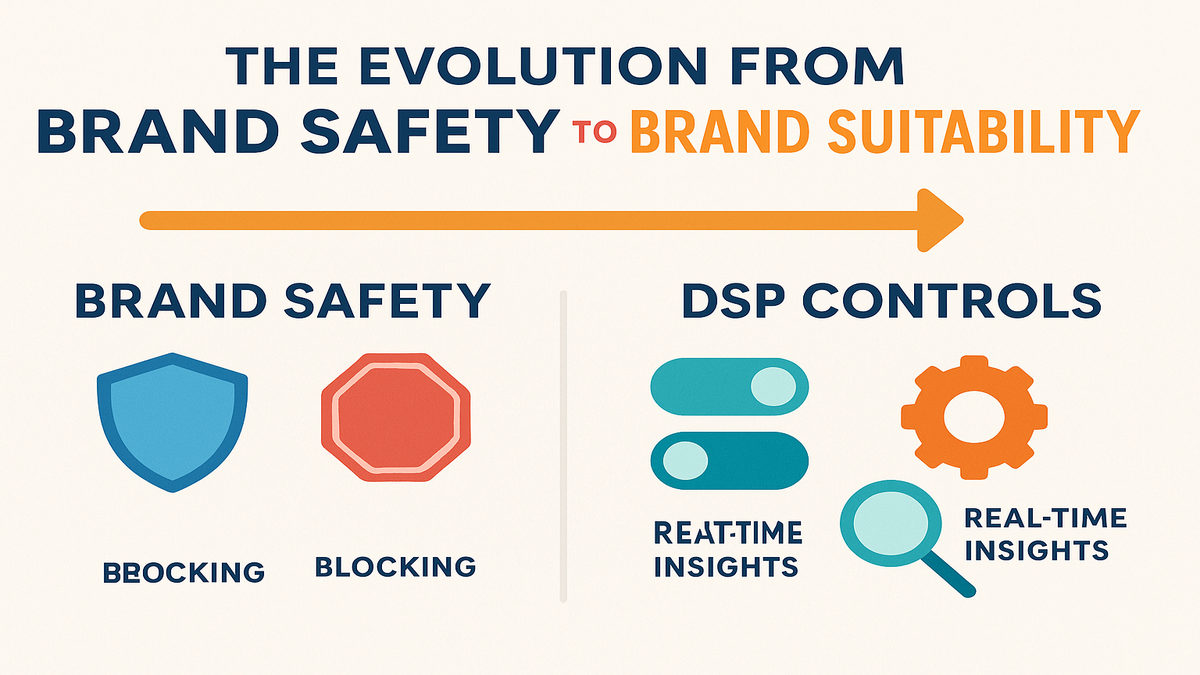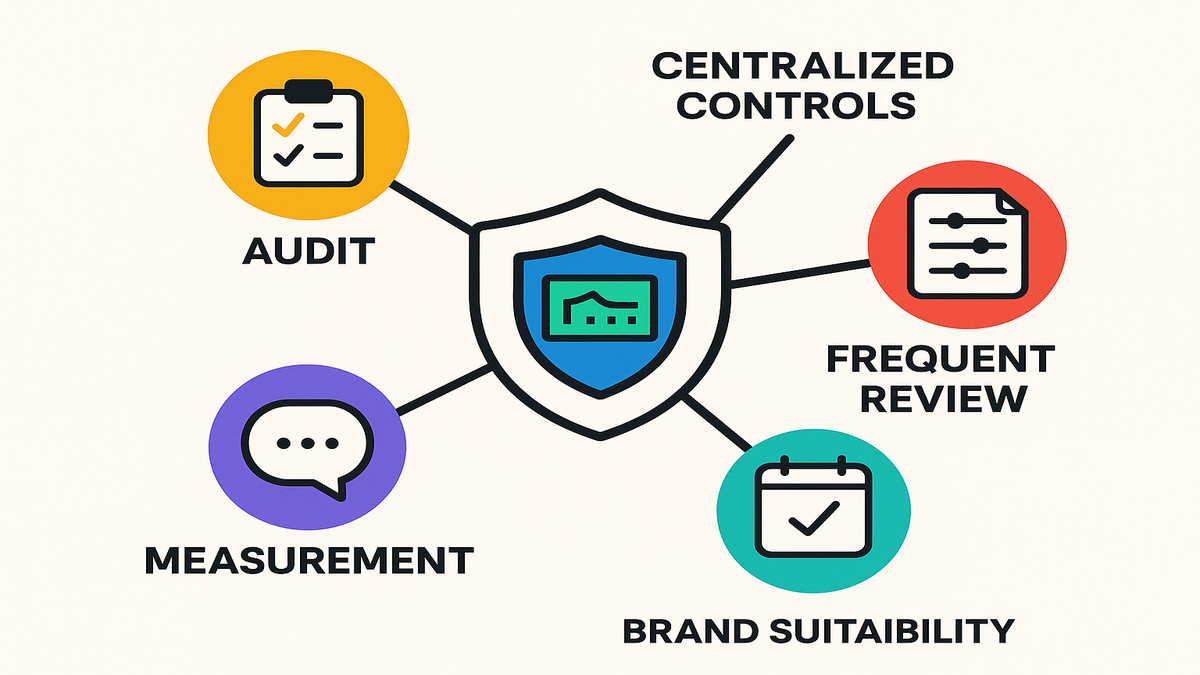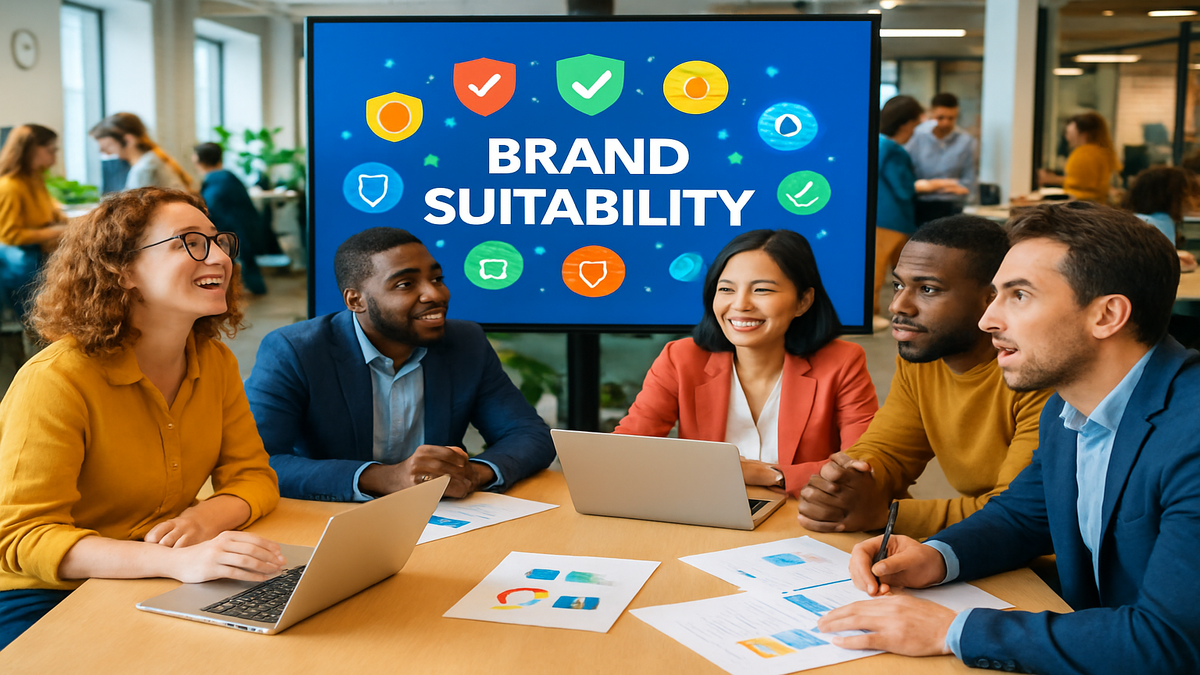
DSP Brand Suitability: The Beta Upgrade Advertisers Needed

You know that feeling. You log in to your DSP, set up a new campaign, and right away you’re tensing up during reporting. Palms go sweaty. Why? Because you’re expecting it—that awful alert. Your ad landed on a sketchy site. Or worse, right next to content that would make your brand manager spit out their coffee.
The days of tossing cash into programmatic and hoping for the best? Those are over. Amazon, Google, and Adobe DSPs are now waving the “transparency” flag. They're unleashing open beta features that actually let you take control: content filters, faster reports, and ways to dodge brand risk while getting more out of each campaign buck.
But honestly, just avoiding disaster isn’t the whole story now. Context can boost your campaigns—not just keep you safe. It's not just about hiding from cringe; it's about landing your ad where it fits, where it’ll pop, and really work.
Think of it like this: brand suitability isn’t only the seatbelt anymore. It’s the GPS. It won’t just stop you from crashing—it also points you to the right party.
Key Takeaways:
- DSPs have new, centralized brand suitability tools in beta
- You get broad company settings or super-specific ad group controls
- Third-party verifiers (DoubleVerify, IAS, Comscore) come built-in
- New content themes, exclusion lists, and filters give you even more control
- Platforms are weaving in measurement, like Amazon Brand Lift, during campaigns

Why Ad Placement Matters
Context Is Everything
Once, “brand safety” meant don’t land by disaster stories. Now, people expect way more. Ad placement? It's not just about avoiding risk. It can make or break your reputation. Look, a 2024 IAB survey found 71% of people blame brands for the content around their ads. It's not just “don’t be rude.” It’s “be like me or I’m gone.”
Running ads for a new DTC brand? Or a big company? You can't ignore where ads end up. One wrong ad next to sketchy content, and bam—a viral screenshot, a PR nightmare, and pain long after your campaign is over.
The Platform Arms Race
The big dogs woke up. Google’s DV360 dumped “brand safety” for “brand suitability.” Amazon opened up what used to be locked, focusing first on Twitch display and video. Adobe? They’re mixing suitability right into campaign goals, tossing in AI smarts and options that’d make a 2019 media buyer’s brain go haywire.
Jason Goldberg, Chief Commerce Strategy Officer at Publicis, said it clear: “Brand suitability controls are now as key as bidding or targeting—they decide if your ads even show up.”
Brand Safety to Suitability
Beyond Blocking
Here’s the quick version. "Brand safety" was about not being linked to disasters. Suitability is bigger. It’s about being on-topic and building your brand for the long haul. These days, DSPs give you:
- Advertiser Level: Set rules for the whole company. Good to lock out obvious no-gos with zero headache.
- Ad Group or Campaign Level: Go deep. Tweak for certain launches or groups. Maybe make it edgy for TikTok teens, but safe for LinkedIn CFOs.
Example: Amazon DSP Beta Controls
Amazon’s open beta (on Twitch) is pushing the line. There are fresh API things like brandSafetyTierInheritedSettingDetails for big-picture rules, and brandSafetyTierTarget for campaign-specific stuff. You pick how much risk you’ll allow. You’ll see reports for every block or miss. No more guessing in the dark.
Want more info? Check our DSP Services for a deep look at brand safety results.
Third-Party Verification Boom
Let’s be real. Letting platforms "check their own homework" isn’t enough. The new norm? Stack up third-party verifiers—DoubleVerify, IAS, Comscore, Peer39. They stop ads before bidding (“never show here”) and chase down where your ads landed after.
Arielle Garcia, an ad tech consultant, sums it up: “The real battleground is independent measurement. No third-party checker? You're letting the fox guard the chickens.”
Third-party checks aren’t fancy extras anymore. They’re essential for anyone serious.
Beta Feature Deep Dives
Adobe DSP Controls
- What’s New? Video placements in open beta, tighter bonds with top checkers
- Highlight: Build custom suitability levels; use "ADSP_" goals for smart, automatic tuning
- Bot & Fraud Walls: Custom algorithms scrub your stuff so you don’t land in bad places
- Real-World Play: One Adobe DSP user used negative targeting, dropped fraud by 37%, and boosted brand awareness by 19%. Real stats.
Hot Trend: Tuning + Suitability
Brands aren’t just blocking. They’re teaching the tech to chase both low cost and brand fit. With Adobe, you can say: “Go for cheap actions—but stay inside my guardrails.”
Google DV360 Controls
- Suitability Instead of Safety: The words and the mindset have shifted
- Central Controls: Set rules at the advertiser level. Campaigns copy these (except some manual cases)
- Ultra Fussy Blocks: Filter by inventory modes, topics, or even trending memes
- Deals Flexibility: Want to whitelist special placements or premium deals? You can override the rules there so you don’t lose cool chances
Why It Matters
Google’s killing “digital content labels” and adding new category filters. You don’t just say “ban adult videos” now. You pick exact themes or moods to block. Huge for YouTube and Demand Gen where context can swing wildly.
Amazon DSP Controls
- Beta Controls: Advertiser/ad-group suitability via API now live (on Twitch)
- Category Blocks: Negative targeting keeps you away from news, spoilers, drama, etc
- Performance Checking: Amazon Brand Lift doesn’t just track where ads ran. It checks if hearts and minds actually changed.
Real-World Peek
A CPG brand used Amazon beta to block "spoilers" and "controversial news" on Twitch. Their favorability shot up 23%—and they dodged viral headaches. Smart suitability = better results and less drama.
Tradeoffs and Watch-Outs
Scale vs. Suitability
Here’s where math kicks in. Block too much? You get less space for ads. Adweek says heavy blocking can lift CPMs by up to 35%, and drop impressions by 15-25%. Do too much, and suddenly your ads barely run or cost way more.
Pro tip: Check what you’re blocking often. Loosen up where you can. Old filters might block your best shots.
Content Categories Change
DSPs change their buckets all the time—news, law rules, or cultural shifts. What was safe in January can be dicey by June. You need to tweak these filters regularly to keep things fresh.
Consistency is Hard
Nothing messes up reports like using random rules for each platform. Lock down strict lists on Amazon, but leave Google or Adobe on default? Expect pain. If you go global or manage many brands, get ready for rule chaos. Some places have extra-mandatory stuff (like EU data or Asia-Pacific topics).
Level-by-Level Reporting
Don’t settle for just totals. You need reporting down to each site, stream, or placement. Some DSPs are still buggy—so expect delays or missing details in beta. But everyone’s working to improve. Better UIs and APIs give you a clearer view of what’s working.
“Our clients' top pain is syncing reports to check if suitability rules did their job in real time. More clarity means fewer headaches.” — Priya Kapoor, VP, Programmatic at Havas

Suitability Moves
Audit First
Start by checking where your ads actually show up. Use logs from verifiers, not just DSP dashboards. Cross-check anything flagged with your own suitability ideas. This sets your real starting point.
Centralize Controls
Advertiser-level rules keep everyone on track, especially for busy teams. But if you’re running a risky or special campaign, use campaign-level tweaks. Don’t just leave everything at default.
Stay Flexible
Adjust suitability settings often. What seemed iffy last quarter might be normal today—sometimes the reverse. Plan to review every month or at least every quarter. Don’t expect culture to stand still.
Push for Measurement
Don’t just try to dodge problems. Aim to measure what matters. Set up brand lift, sentiment checks, and A/B tests. Platforms like Amazon give feedback in real time. See if your suitability choices are really moving awareness or favorability.
If you want smarter tracking with DSPs, check our Features platform for insights across your stack.
Quick Recap
- You have more power now—right down to where every ad lands
- Third-party verification is a must, not a bonus
- Exclude by mood, tone, or meme type—not just old “no violence” tags
- Beta tools now mix suitability, optimization, and up-to-the-minute feedback
Advertisers FAQ
Q: What’s the main difference between brand safety and suitability?
A: Safety blocks outright bad stuff—illegal, hateful, explicit. Suitability blocks off-brand stuff, even if it's "safe." Like an energy drink ad near an insomnia story: not illegal, but still off.Q: Are these open beta features for everyone?
A: Usually, you need direct DSP access or agency help. Amazon’s are on Twitch by request; Google and Adobe are opening up more, but stuff changes fast.Q: Will stricter suitability shrink campaign scale?
A: Sometimes. More filters = fewer slots and higher prices. But tight, smart rules can make each view count more. Optimization helps limit wasted blocking.Q: How exactly does third-party verification help?
A: DoubleVerify and IAS scan inventory live. They keep you out of places that fail your filters. This means you’re not just trusting the DSP’s word.Q: How do I know my suitability setup is working?
A: Use DSP studies (like Amazon Brand Lift), watch audience mood, and check results. Compare how things look before and after setting rules.Q: Can I set both company and campaign-level rules in all DSPs?
A: Almost all now, or soon. Amazon’s deep API is in beta, Google lets campaign overrides happen, and Adobe’s got both levels in play.
Pro Moves
- Start with a Suitability Audit: Scan old placements using logs, spot anything off.
- Map Brand Voice & Risk: Write down and share what’s “on-brand,” not just “safe.”
- Centralize Advertiser-Level Rules: Make the must-have rules clear for everyone.
- Use Campaign Overrides: Loosen rules for a bold launch, keep them strict elsewhere.
- Add More Than One Verifier: Don’t lean on one tech stack. Mix DoubleVerify, IAS, or Comscore for better cover.
- Measure Everything: Don’t just count reach or cost. Use brand lift and sentiment to see if suitability helps your real goals.
- Iterate Often: Don’t let your block list gather dust. Check and tweak monthly or quarterly as trends shift.
Open beta suitability tools are changing programmatic ads. It’s not a guessing game now—it’s a way to protect and grow your brand. DSPs are giving you more control fast, but it’s on you to use these tools to win.
Ready for more control? Dive into our Amazon Brand Lift deep-dive, check Meta’s safety tips, or read up on Adobe DSP best practices.
References
- Amazon DSP brand safety and suitability
- Google Brand Suitability in DV360
- Adobe Advertising DSP: Brand Safety and Suitability
- IAB 2024 Consumer Privacy and Ad Adjacency Study
- DoubleVerify Brand Suitability Solutions
- Adweek on Brand Suitability Economics
- Havas Media Group: Brand Safety and Suitability Index

